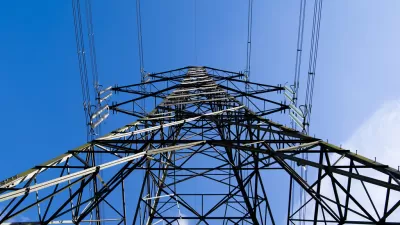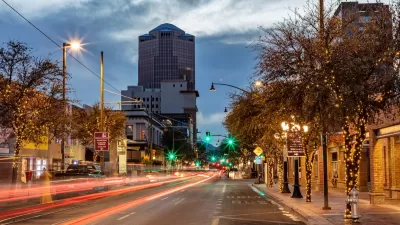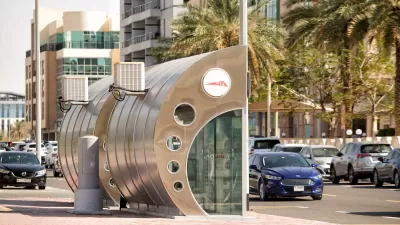A landscape architect in Tucson shares a professional lament: intrusive, ugly utilities.

Over the last decade or so, Ellen Barth Alster has noticed a trend in her county's electrical infrastructure: It’s getting uglier.
The landscape architect for the Department of Transportation in Pima County, Arizona, Alster makes clear on The Field that this is an indignity to the region’s cherished desert environment.
Where once utility infrastructure took care not to detract from the beauty of their natural surroundings, now, she writes, "aesthetics are given a passing nod, at best, in facility design." As a result, dark steel poles taller than any building have become "the most prominent landscape feature" on the open horizon.
She explains:
Local regulations written a decade ago have not kept pace with how massive the structures and facilities have become … Meanwhile, it’s a struggle to get communication providers to comply with the minimum of code requirements: siting for less visual impact, selecting environmentally compatible colors, replacing vegetation that will be impacted.
To gauge the extent of this trend anecdotally, Alster poses a few open questions to fellow professionals. Chief among them:
Are newer, larger power poles in your area being designed with visual compatibility issues in mind? Or are they becoming a dominant skyline feature?
The post is peppered with photos that clearly illustrate the contrast between tasteful utility poles to those that intrude on the protected desert landscape.
FULL STORY: When Did Scenic Quality Stop Mattering?

Planetizen Federal Action Tracker
A weekly monitor of how Trump’s orders and actions are impacting planners and planning in America.

Maui's Vacation Rental Debate Turns Ugly
Verbal attacks, misinformation campaigns and fistfights plague a high-stakes debate to convert thousands of vacation rentals into long-term housing.

San Francisco Suspends Traffic Calming Amidst Record Deaths
Citing “a challenging fiscal landscape,” the city will cease the program on the heels of 42 traffic deaths, including 24 pedestrians.

Amtrak Rolls Out New Orleans to Alabama “Mardi Gras” Train
The new service will operate morning and evening departures between Mobile and New Orleans.

The Subversive Car-Free Guide to Trump's Great American Road Trip
Car-free ways to access Chicagoland’s best tourist attractions.

San Antonio and Austin are Fusing Into one Massive Megaregion
The region spanning the two central Texas cities is growing fast, posing challenges for local infrastructure and water supplies.
Urban Design for Planners 1: Software Tools
This six-course series explores essential urban design concepts using open source software and equips planners with the tools they need to participate fully in the urban design process.
Planning for Universal Design
Learn the tools for implementing Universal Design in planning regulations.
Heyer Gruel & Associates PA
JM Goldson LLC
Custer County Colorado
City of Camden Redevelopment Agency
City of Astoria
Transportation Research & Education Center (TREC) at Portland State University
Jefferson Parish Government
Camden Redevelopment Agency
City of Claremont





























